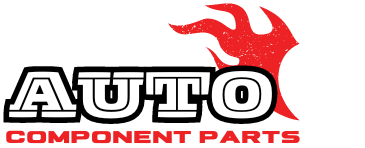When it comes to maintaining the longevity and performance of your vehicle’s tires, understanding the nuanced differences between wheel alignment and tire rotation is essential.
The critical differences between wheel alignment and tire rotation lie in their primary focus and frequency. Wheel alignment fine-tunes the angles of the wheels, ensuring optimal contact with the road and stable handling. This precision adjustment occasionally addresses specific issues or during significant service intervals. On the other hand, tire rotation involves repositioning tires on the vehicle to achieve balanced tread wear, promoting extended tire life and optimal performance. This regular maintenance task is recommended every 6,000 to 8,000 miles. In essence, alignment addresses angles, contributing to a stable ride, while rotation deals with positional adjustments, maximizing tire longevity.
However, there is more than that. To understand this topic thoroughly, in this comprehensive guide, we’ll delve into the intricacies of each, exploring their purposes, signs indicating the need for service, and their impact on your car’s overall performance.
Let’s get started with wheel alignment.
Wheel Alignment: Fine-Tuning Your Vehicle’s Geometry
a. Definition and Importance:
Wheel alignment is the meticulous adjustment of the angles of your vehicle’s wheels to meet the manufacturer’s specifications. This involves addressing three key parameters: camber, caster, and toe angles. Proper wheel alignment ensures that your tires make optimal contact with the road, promoting even wear across the tread and enhancing vehicle stability.
1. Addressing Uneven Tire Wear: One of the primary benefits of wheel alignment is the prevention of uneven tire wear, a common concern that arises from misaligned tires. Uneven wear can manifest as Bald tires, where certain areas of the tire tread become more worn than others due to improper contact with the road.
Chapel Hill Tire, a reputable auto service provider, emphasizes the importance of addressing uneven tire wear through precise wheel alignment. They highlight that misaligned tires not only compromise safety but also lead to rapid tire wear and increased expenditures on tire replacements.
2. Impact on Fuel Efficiency: Correct wheel alignment improves fuel efficiency, influenced by efficient driving patterns and reduced rolling resistance. Imbalanced wheels, a consequence of poor alignment, can lead to poor fuel efficiency, resulting in increased fuel expenditures over time.
Firestone Complete Auto Care and McCullough NAPA Auto Care rare are recognized leaders in automotive services, stressing the connection between proper wheel alignment and enhanced fuel economy. They recommend regular checks to ensure optimal vehicle performance and fuel efficiency.
b. Signs Your Vehicle Needs Alignment:
- Off-Center Steering Wheel:
- An off-center steering wheel indicates that your wheels may be out of alignment. If you constantly correct the steering to keep the vehicle straight, it’s time for an alignment check.
- Vehicle Pulling to One Side:
- If your car tends to drift to one side, especially on a straight road, it suggests a potential alignment issue. This can impact your vehicle’s stability and handling.
- Uneven Tire Wear:
- Inspect your tires for uneven wear patterns. If you notice that the tread on one side is wearing more quickly than the other, it’s a sign that your wheels may need alignment.
Tip: Chapel Hill Tire recommends incorporating wheel alignment into your regular maintenance schedule, especially for rear-wheel drive vehicles that may experience different alignment challenges. Proper alignment contributes to a smoother ride and safer driving conditions.
c. Maintenance Tips:
1. Schedule Alignment After Significant Events:
- After Hitting Potholes or Road Bumps: Impact from potholes or road irregularities can throw your wheels out of alignment. Consider scheduling an alignment check after such incidents.
- Following Suspension or Steering System Repairs: Any repairs or modifications to your vehicle’s suspension or steering system may affect wheel alignment. It’s advisable to check the alignment in these cases.
2. Seek Professional Advice:
- Consulting ASE-Certified Technicians: ASE (Automotive Service Excellence)-certified technicians possess the expertise to perform precise alignment adjustments. Regular consultations with qualified mechanics ensure your wheels stay aligned for optimal performance.
3. Proper Alignment for Specific Driving Conditions:
- Front- or Rear-Wheel Drive Vehicles: The impact of wheel alignment can vary based on whether your vehicle is front- or rear-wheel drive. Rear-wheel drive vehicles, for example, may experience different alignment challenges.
Chapel Hill Tire, a leading auto service provider, emphasizes the role of proper alignment in ensuring a smoother ride and optimal fuel efficiency. With specialized equipment and qualified technicians, they offer precise alignment services tailored to your vehicle’s needs.
Tire Rotation: Maximizing Tread Life and Performance
a. Definition and Importance:
Tire rotation involves moving your vehicle’s tires from one position to another in a specific pattern, such as diagonal or criss-cross rotation. This practice addresses that tires wear differently depending on their work on the vehicle. Regular tire rotation promotes balanced tread wear, extending the overall lifespan of your tires and enhancing performance.
1. Balancing Tire Wear Across Positions:
Tires in different positions on a vehicle experience varying levels of stress and load. For example, front tires typically bear more weight and handle the brunt of braking forces. By rotating tires, you ensure each tire takes turns in these positions, promoting balanced wear. This optimizes tire performance and contributes to safer driving conditions on various road surfaces.
RNR Tire Express, a reliable tire provider, emphasizes the importance of regular tire rotation in maintaining balanced tire wear. They highlight that the differences between tire rotation patterns play a crucial role in achieving optimal tire lifespan and performance.
2. Enhanced Performance and Traction:
Balanced tread wear extends tire life and contributes to improved performance and traction. This is especially crucial in adverse road conditions, where tires with even tread provide better grip and handling. Concerns about tire rotation, such as irregular tire wear or occasional tire balancing, can be effectively addressed through a well-planned rotation schedule.
Driver’s Edge Complete Tire & Auto Service, known for its commitment to quality tire services, recommends regular tire rotation for optimal performance. They highlight the positive impact of balanced wear on driving experiences, including smoother rides and better handling.
3. Extended Tire Life and Cost Savings:
Regular rotation minimizes the impact of uneven wear, leading to extended tire life. This, in turn, reduces the frequency of tire replacements, resulting in long-term cost savings for vehicle owners. If not addressed through proper rotation, excessive tire wear can result in premature tire damage and tread loss.
Proper tire maintenance, including regular rotations, is highlighted by Shop For Tires as a critical factor in maximizing the lifespan of your tires. Their experts stress the importance of adhering to a specific pattern for tire rotation to achieve optimal results.
b. Signs Your Tires Need Rotation:
- Irregular Tread Wear Patterns:
- Check your tires for signs of uneven wear. If certain areas of the tread are more worn than others, it indicates that your tires may need rotation.
- Uneven Tire Pressure:
- Variations in tire pressure across different tires can indicate uneven wear. Regular rotation helps maintain consistent pressure levels.
- Mileage Approaching Manufacturer Recommendations:
- Manufacturers often provide guidelines for tire rotation intervals. If you’re approaching the recommended mileage, it’s time to schedule a rotation.
Tip: RNR Tire Express suggests incorporating tire rotation into your regular maintenance schedule, aligning it with the manufacturer’s recommendations for optimal results. Standard course, including addressing concerns about tire rotation patterns, ensures balanced tire wear and extended tire life.
c. Maintenance Tips:
Follow Manufacturer Guidelines:
- Adhering to Rotation Intervals: Consult your vehicle’s manual for recommended tire rotation intervals. Following these guidelines ensures timely rotation and optimal tire health.
Consider Rotation During Routine Maintenance:
- Scheduled Rotations During Maintenance Appointments: Incorporate tire rotation into routine maintenance appointments. This ensures that the process becomes a regular part of your vehicle care routine.
Shop For Tires, a reliable tire provider, emphasizes the role of regular rotation in achieving balanced tire wear and optimal performance.
So, by now, you have got an idea of wheel alignment and rotation; let’s look at their differences.
Key Differences: Aligning and Rotating for Tire Health
a. Focus of Adjustment:
- Wheel Alignment – Geometry Fine-Tuning:
- Wheel alignment addresses the angles of the wheels, ensuring they are set to the manufacturer’s specifications. This process focuses on the precise geometric alignment of the wheels for optimal contact and stability.
- Tire Rotation – Positional Adjustment:
- Tire rotation deals with the physical position of the tires on the vehicle. It involves moving tires from one place to another in a specific pattern to achieve balanced tread wear.
b. Frequency of Service:
- Wheel Alignment – Occasional Precision:
- Wheel alignment is performed less frequently, often in response to specific issues or during significant service intervals. Occasional checks ensure that your wheels are precisely aligned.
- Tire Rotation – Regular Maintenance:
- Tire rotation is a regular maintenance task, recommended every 6,000 to 8,000 miles or as per the manufacturer’s guidelines. Regular rotation ensures balanced wear and extended tire life.
c. Impact on Tires:
- Alignment – Optimal Contact and Stability:
- Alignment ensures proper tire contact with the road, addressing handling and wear issues. It contributes to a stable and comfortable ride.
- Rotation – Balanced Wear for Longevity:
- Rotation extends tire life by promoting even tread wear and optimizing performance. It maximizes the lifespan of your tires, reducing the frequency of replacements.
In Conclusion: Preserving Your Tires for a Smooth Ride
Maintaining the health and longevity of your vehicle’s tires is crucial for a smooth, safe, and efficient driving experience. Wheel alignment and tire rotation are two essential aspects of tire care that serve distinct purposes, but they go hand in hand in preserving the tires’ health. Wheel alignment ensures that the wheels are perpendicular to the ground and parallel to each other, thus preventing uneven tire wear and tear. On the other hand, tire rotation maximizes tire life by distributing the wear and tear evenly across all four tires. By paying attention to wheel alignment and tire rotation, you can extend the life of your vehicle’s tires and enjoy optimal performance on the road.


